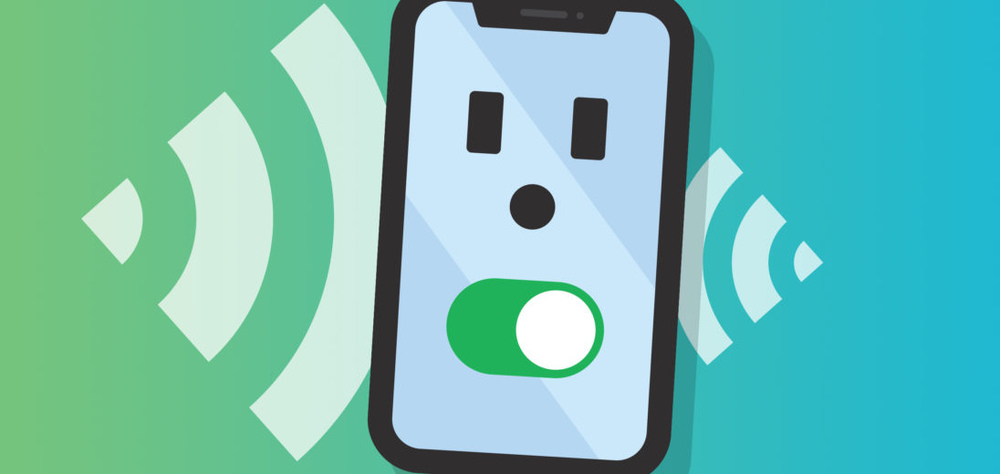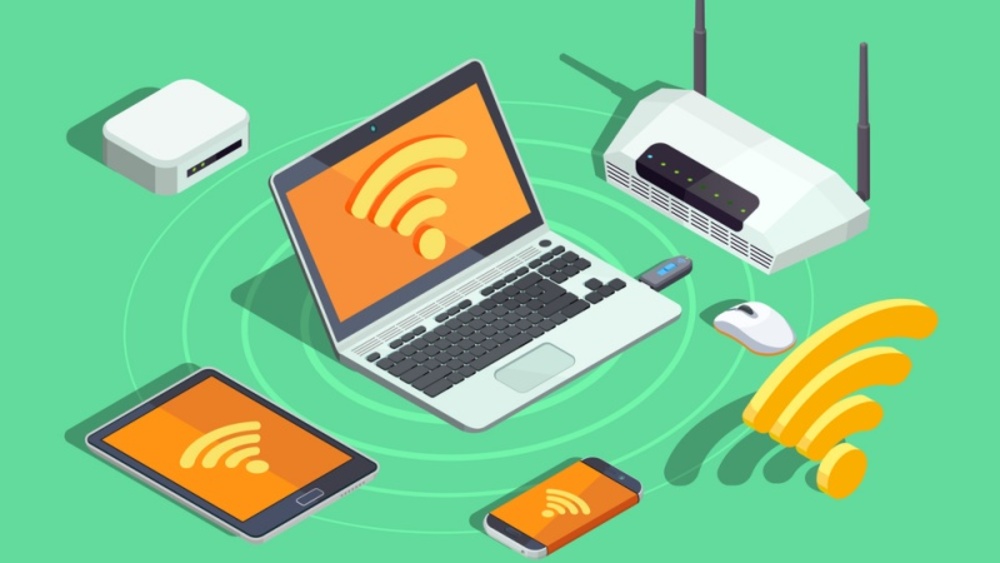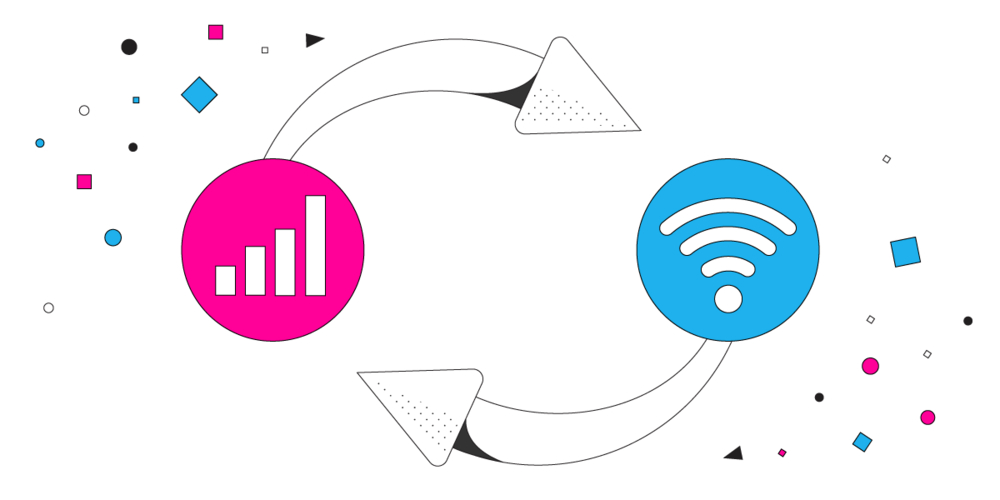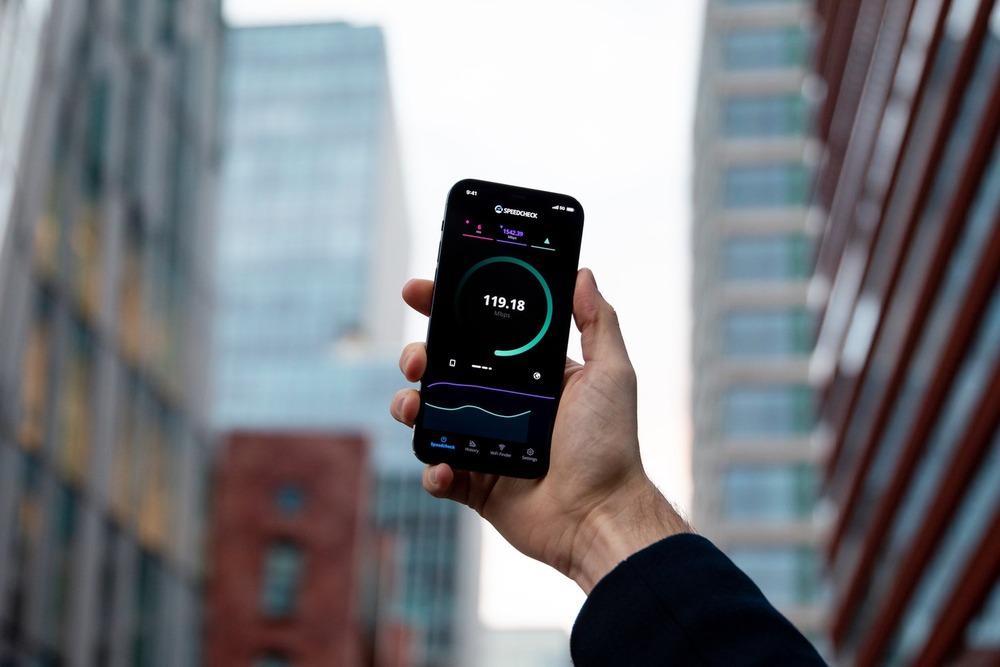Key Differences Between Wi-fi vs Cellular Data – Speed, Availability & Expense
[fusion_builder_container type=”flex” hundred_percent=”no” equal_height_columns=”no” hide_on_mobile=”small-visibility,medium-visibility,large-visibility” background_position=”center center” background_repeat=”no-repeat” fade=”no” background_parallax=”none” parallax_speed=”0.3″ video_aspect_ratio=”16:9″ video_loop=”yes” video_mute=”yes” border_style=”solid”][fusion_builder_row][fusion_builder_column type=”1_1″ layout=”1_1″ background_position=”left top” border_style=”solid” border_position=”all” spacing=”yes” background_repeat=”no-repeat” margin_top=”0px” margin_bottom=”0px” animation_speed=”0.3″ animation_direction=”left” hide_on_mobile=”small-visibility,medium-visibility,large-visibility” center_content=”no” last=”true” hover_type=”none” min_height=”” link=”” background_blend_mode=”overlay” first=”true”][fusion_text]
Wi-Fi vs cellular data are both ways to connect your devices to the internet, but they differ in connection method, cost, and security. Unsecured connections, of course, can be exploited by attackers to steal your information. Which is more harmful Wi-Fi or mobile data? This blog will explore how to protect your information when using each type of connection.
Explain the meaning of Cellular Data.
What Is Cellular Data? It’s also called mobile data, like an invisible internet connection for your phone or tablet. It uses cell towers instead of Wi-Fi to connect you to the web. This lets you browse websites, use apps, and stay connected even when you’re on the go. Cellular data is usually measured in megabytes (MB) and gigabytes (GB), and depending on your plan, you might have a limited amount each month.

There’s a common confusion between Wi-Fi vs cellular data, even though they both get your device online. Here’s the breakdown:
Think of Wi-Fi like a personal internet bubble. It uses radio waves to connect your device to a router, often in a home, office, or coffee shop. This connection is usually free, with a limited range. Imagine Wi-Fi as borrowing internet from a friend’s house.
What is cellular data? It is like renting internet access on the go. Your phone connects to cell towers operated by your mobile carrier, providing internet almost anywhere with a signal. However, this access often comes with data usage charges, like a pay-as-you-go internet plan.
The misunderstanding often lies in assuming Wi-Fi vs cellular data are the same. While using Wi-Fi vs cellular data both get you online wirelessly, Wi-Fi relies on a nearby network, while cellular data taps into your mobile carrier’s signal. It’s like the difference between borrowing a cup of sugar from a neighbor and having your own bag at home.
Check out this article: “Does cellular data cost money? Here’s the deal on mobile data costs” to plan your cellular data expense.
What is Wi-fi?
Wi-Fi is a technology that frees your devices from wires when connecting to the internet. Imagine it as an invisible tether that links your laptop, smartphone, or tablet to the internet. This is achieved through radio waves transmitted by a wireless router, which acts as a hub. The router itself is connected to your internet service provider’s main line, and it broadcasts the internet signal throughout your home or office. Your devices can then pick up on this signal and translate it into data you can use, allowing you to browse the web, stream videos, and more.
In a simple way to identify what is Wi-Fi? Imagine invisible wires that connect your phone, laptop, and other devices to the internet. That’s basically Wi-Fi – it’s like magic internet air! Wi-Fi networks are widespread. You’ll likely find them in homes, businesses, and even public places like coffee shops, libraries, and airports. This widespread availability makes Wi-Fi a key part of our modern, connected world.

Wi-Fi vs. cellular data is a common debate regarding convenience, stability, and security. While both offer internet access, cellular data often proves more advantageous due to:
- Wider reach: Cellular data works almost anywhere with cell tower coverage, unlike Wi-Fi’s limited range to routers.
- Seamless connectivity: You automatically switch between cell towers, maintaining a constant connection on the go.
However, Wi-Fi excels in:
- Speed: when using Wi-Fi vs celluar data, Wi-Fi typically offers faster speeds than cellular data, ideal for streaming or downloading large files.
- Cost: Wi-Fi is often free, eliminating data usage charges from your cellular plan.
- Security: Secure, password-protected Wi-Fi networks can be safer than unsecured public cellular connections.
What are the differences between Wi-fi vs cellular data?
The debate between Wi-Fi vs cellular data becomes more nuanced when considering these criteria. Let’s break down the key differences between mobile data and internet access in terms of requirements, speed, data caps, availability, and accessibility.
Wi-fi vs cellular data are both ways to connect your devices to the internet, but they differ in their requirements. What is Wi-Fi? Wi-Fi necessitates a wireless router in range, creating a local network for your device to connect to. This provides a typically faster and more stable connection, but only within the router’s range. What is cellular data? Cellular data, on the other hand, relies on cell towers operated by mobile carriers. This offers broader coverage and allows you to stay connected on the go, but data speeds can be slower, and you may have data usage limits depending on your plan.

1. Speed & Data Cap
Wi-Fi typically offers much faster speeds, ideal for streaming high-definition videos or downloading large files. On the other hand, cellular data speeds can vary depending on your location and network congestion, but they’re generally slower than Wi-Fi. The bigger difference lies in data caps. Wi-Fi often comes with unlimited data usage, while cellular data plans usually have data caps. Exceeding these caps can result in overage charges or throttled speeds, where your internet slows down significantly. So, Wi-Fi vs cellular data for activities that require a lot of data, Wi-Fi is the way to go, while cellular data is best suited for staying connected on the go when Wi-Fi isn’t available.
2. Availability & Accessibility

Wi-Fi offers internet through a wireless network, typically at home, work, or public hotspots. Its availability depends on being within range of a network, which can be limited in some areas. Accessibility is usually straightforward; you just need to connect to the network, sometimes entering a password.
Cellular data, on the other hand, uses your mobile carrier’s signal to access the internet. This provides broader availability as it works almost anywhere with cell service. However, accessibility can be limited by your data plan and signal strength. You might experience data overages or slow speeds depending on your plan and location.
Need an affordable and powerful data plan? check out this article: Why AirVoice Wireless Can Offer You the Most Affordable Phone Price?
There’s a common misconception that iPhone Wi-Fi vs cellular data, or any particular phone type for that matter, have different abilities to access Wi-Fi vs cellular data. Again, all smartphones can connect to both Wi-Fi and cellular data. The key difference lies in how they connect. WiFi uses a wireless router to provide internet access, typically within a limited range like your home or a coffee shop. Cellular data connects to cell towers operated by your mobile carrier, offering internet access almost anywhere with cell service. So,
Whether you’re using an iPhone Wi-Fi vs cellular data or any other phone, choosing between Wi-Fi and cellular data depends on your location and data plan.
3. Expense
In summary, this table will compare key features of wifi vs cellular data, highlighting the difference between mobile data and Internet access.
| Feature | Wi-Fi | Cellular Data |
| Connection Type | Connects to a wireless router | Connects to cell towers operated by mobile carriers |
| Range | Limited to the range of the router
(typically 10-100 meters) |
Wide range, depending on cell tower coverage
(can vary greatly) |
| Speed | Generally faster, with speeds up to Gigabit per second (Gbps) depending on the router and plan | Slower than Wi-Fi, with speeds ranging from 3G (a few Mbps) to 5G (potentially exceeding 1 Gbps) depending on the network |
| Data Cap | Usually no cap, but depends on the internet service provider (ISP) plan | Often has data caps, which can be exceeded with additional charges |
| Accessibility | Requires being in a range of a Wi-Fi network | Available almost anywhere with cell tower coverage (may have limitations in remote areas) |
| Cost | Typically included in the internet service plan for your home or office | Payable through a mobile data plan, which can be a fixed monthly fee or per gigabyte used |
The best choice between Wi-Fi vs cellular data depends on your situation. If you’re at home or in a location with free Wi-Fi, prioritize Wi-Fi for its faster speeds and potentially unlimited data. When you’re on the go and need to stay connected, cellular data provides the flexibility to access the internet almost anywhere. Just be mindful of your data usage if you have a limited plan.
Looking for an unlimited data plan for flexibility and freedom in connectivity? Check out this affordable bundle rate plan from AirVoice Wireless here!
Which is More Harmful Wi-Fi or Mobile Data?

While both using Wi-Fi vs cellular data can be secure, in some cases, which is more harmful Wi-Fi or mobile data? Generally, cellular data is considered more secure than Wi-Fi for a couple of reasons:
- Encryption: Cellular networks typically use stronger encryption protocols compared to public Wi-Fi hotspots. This makes it more difficult for hackers to intercept your data as it travels between your device and the internet.
- Open Networks: Public Wi-Fi, especially in places like coffee shops or airports, can be unsecured or use weak encryption. This means your data is freely available for anyone to see if they know how to look.
However, Wi-Fi can also be secure, especially when it’s a private network you control:
- Secured Home Wi-Fi: Your home Wi-Fi network can be as secure as cellular data if you use a strong password, WPA2 encryption (the current standard), and keep your router software updated.
- Public Wi-Fi with VPN: If you must use public Wi-Fi, you can add an extra layer of security by using a Virtual Private Network (VPN). This encrypts all your traffic, making it much harder for hackers to steal your information.
Which is more harmful Wi-Fi or mobile data, here’s a quick rundown:
- Use cellular data for the best security when on public Wi-Fi or using unsecured networks.
- Use secure Wi-Fi (password protected with WPA2 encryption) for the best speeds and data savings at home or trusted locations.
- Consider using a VPN for an extra layer of security on public Wi-Fi.
Conclusion: which one is better? Wi-Fi vs Cellular data?
There’s no single answer to which is better, as it depends on the situation. Wi-Fi offers a faster connection for activities like streaming and downloading, usually at no extra cost. But its range is limited. Cellular data, on the other hand, lets you stay connected almost anywhere, but data usage can be expensive, and speeds may vary.
To sum up, both Wi-Fi and cellular data have their own strengths and weaknesses. The best choice for you will depend on your individual needs and priorities. If you prioritize speed and stability and are often in locations with Wi-Fi, then Wi-Fi is the way to go. However, if you need to stay connected on the go and don’t mind a slower connection or potential data charges, then cellular data is a good option. For the most flexibility, you might even consider having a data plan that allows you to use both Wi-Fi and cellular data.
[/fusion_text][/fusion_builder_column][/fusion_builder_row][/fusion_builder_container]






